[First Ride] Specialized S-Works Stumpjumper 29 ST
Since 1981 the Stumpjumper has been the mainstay trail bike offering from Specialized. Over the years, the Californian brand has consistently developed cutting-edge technology to implement into this model. In more recent years, the SWAT downtube storage system came to be and was first introduced on the Stumpy. Via a sneaky door under the water bottle cage, you can store a pump, tube, tools a jacket, food and more in the downtube. Brilliant, right? Well, despite that breakthrough, the last iteration of Stumpjumper wasn’t all that cutting-edge in terms of geometry. At the time it came out, smaller brands like Transition and Evil were leading the long/low/slack charge in the geometry department – particularly in aggressive, short travel 29″ wheeled bikes. Fast forward a couple of years and Specialized have ditched the safe, conservative approach and gone all in with a bike that’s far more capable of man-handling aggressive terrain.
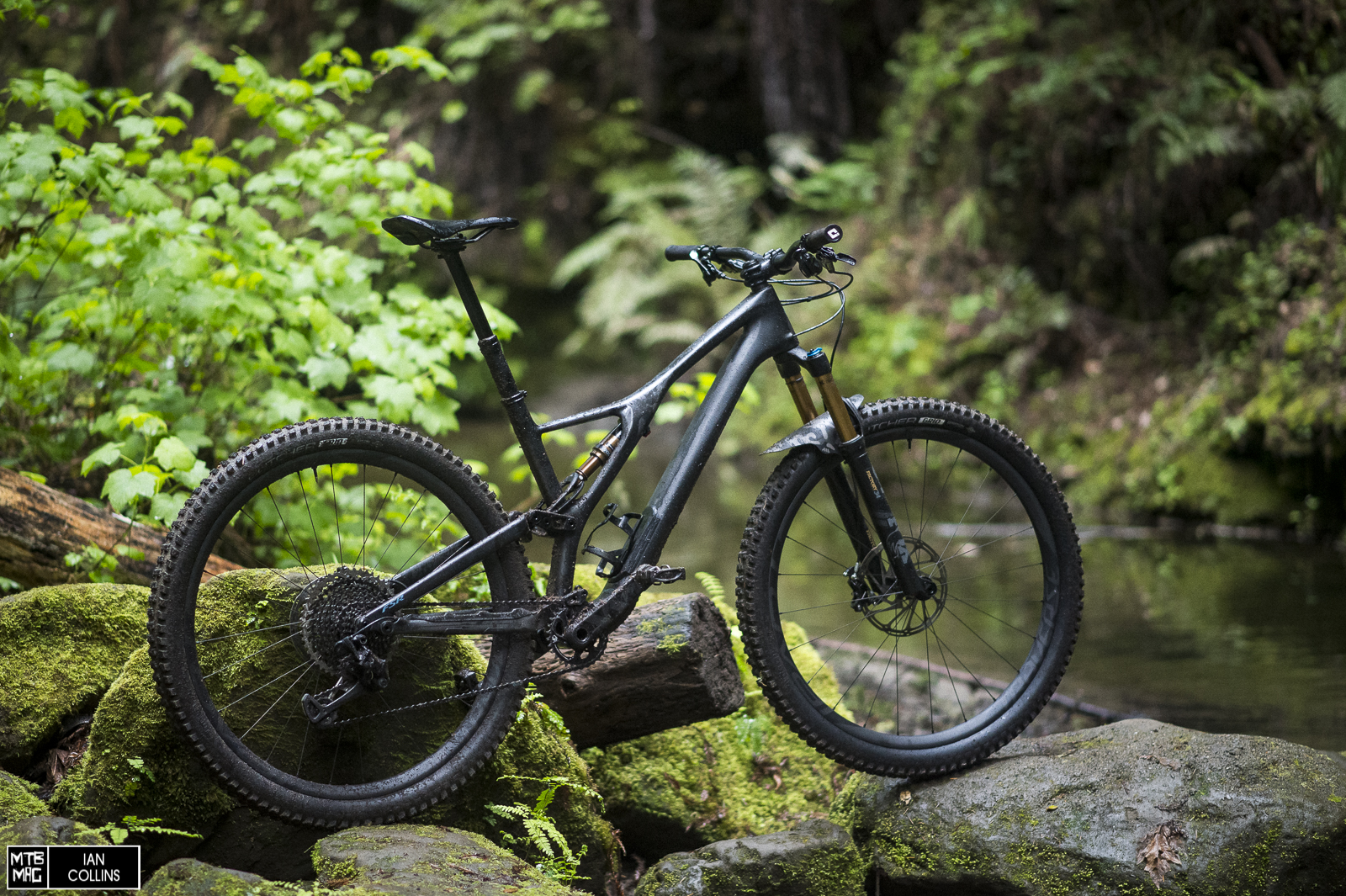
For this product cycle, Stumpjumper covers a broad range and cannibalizes the Camber with the Short Travel version that I tested. After all, the “trail bike” category is rather vague and broad reaching these days, so why not cover the full gamut? Specialized offer 27.5″ and 29″ wheeled versions and break things down as follows:
• Stumpjumper Short Travel – “Snappy and Nimble”
– 29″ – 130mm front / 120mm rear travel
– 27.5″ – 130mm front / 130mm rear travel
• Stumpjumper – “Fast and Planted”
– 29″ – 150mm front / 140mm rear travel
– 27.5″ – 150mm front / 150mm rear travel
• Stumpjumper Evo – “Gravity Focused”
– 29″ – 150mm front / 140mm rear travel
– 27.5″ – 150mm front / 150mm rear travel
Knowing full well that I’m a fan of short travel 29″ bikes, my contact at Specialized specifically wanted to put me on the Short Travel 29″ model with 130mm front and 120mm rear travel. And so, an S-Works model ended up in my hands just over a week ago and I’ve been fervently getting in the miles. Riding in Santa Cruz and Aptos, I managed to sneak right around 20,000 feet of climbing and descending so far. This is by no means a long term test – that’s a few months away. However, I’ve managed to get a very good idea of what this bike is all about and I’m head over heels. Read on to find out why…
Geometry
In my opinion, the biggest story here is the updated and vastly improved geometry. First off, the last Stumpy fit quite small – for a size large it had short 431mm reach and used a 60mm stem. The new Stumpjumper gains almost an inch of reach at 455 (large) and uses a faster handling 50mm stem in L/XL (S/M use a 40mm stem). The handlebar also got bumped up to 790mm wide. All of the Stumpjumpers have a “flip chip” which allows for adjusting +/- 6mm of BB height and +/- half a degree of head tube/seat tube angle. Keeping with tradition on the Stumpjumper, Specialized maintains a fairly short 437mm chainstay, which I applaud. Its 27.5″ wheeled brethren have 432mm chainstays.
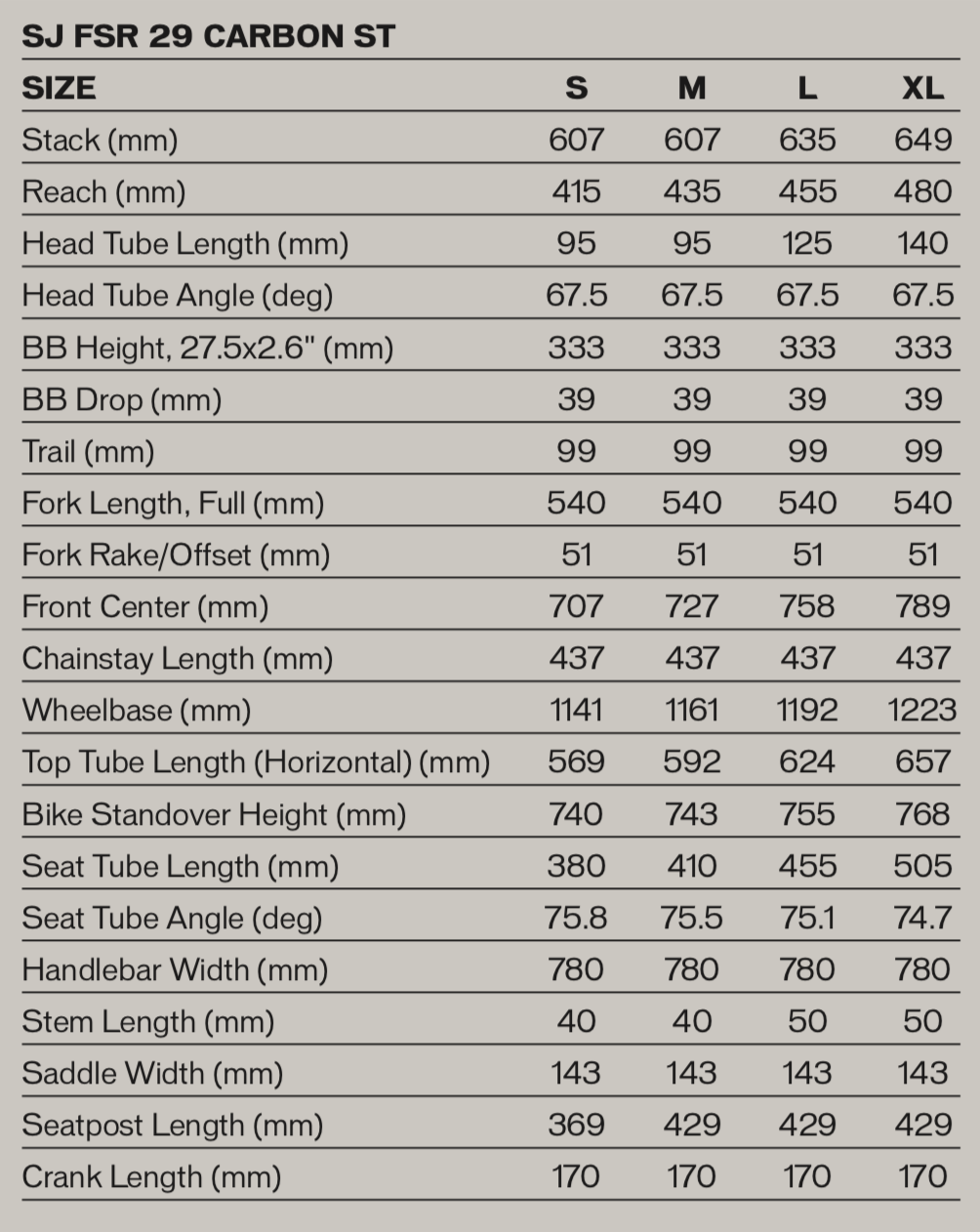
The geometry chart above from Specialized is slightly misleading as it shows the BB height as measured with 27.5″ X 2.6″ tires. In any case, it’s quite low, just like most Stumpjumpers from years past. The claimed head angle is 67.5º, which isn’t Earth shatteringly slack, but rather – just about right. It’s worth pointing out that our bike’s head angle actually measured just over 68º in the LOW setting – at least according to our smartphone app, anyway.
Details
- 29″ wheels (27.5 Plus compatible)
- 27.5″ X 3″ / 29″ X 2.6″ tire clearance
- ~27 lbs.
- $9,500 USD
- S, M ,L(tested), XL
- Boost spacing
- Metric shock spacing
- 130mm front travel / 120mm rear travel
- “Flip Chip” for 6mm BB adjustment & .5º HA/SA adjustment
- FACT carbon fiber front triangle and rear end
- Updated geometry and sizing
While most of the praise thus far has been about numbers, it’s worth mentioning outright that Specialized haven’t lost their rhythm in introducing brilliant new features. We’ll highlight some here, but first – Hallelujah, they’ve listened! There are NO PROPRIETARY parts on the new Stumpjumpers – they all use Metric sized shocks and standard eyelets. With that in mind, it’s worth noting that Specialized does put in a bit of extra work to get proprietary tunes on not only their rear shocks, but also their forks. Last but not least, “Autosag” is gone, as it did not work mechanically with the new tunes. Instead, the bikes ship with a sag chip token you can use to physically measure sag, or use Specialized’s new app, which is impressively accurate.

A major part of the story is the move to a “Sidearm” style frame. Much like the Demo, the frame is fully asymmetrical and features a sleek, but striking look. While on the trail I can’t make any claims that it made a difference, it certainly did make taking the shock off and/or changing the geometry a breeze.

A handful of Specialized specific bits and features are shown above. On the left, at 160mm travel, we finally see a longer travel dropper seatpost. It features a classic fore/aft two bolt head and an oversized 34.9 outer diameter which actually improved stiffness on the climbs substantially. Specialized have also slowed down the return speed so it doesn’t slam you in the junk anymore. The Command post IRcc features 16-position, indexed adjustability and the 1X style lever remains the same. On the top right, the SWAT downtube storage sees 20% more storage via a massive (read: also stiffer) downtube and its closure system becomes cleaner and sleeker. Bottom right, in the steerer tube, you’ll find a spare chain link and the genius SWAT CC mini tool/chain breaker/headset tensioner.
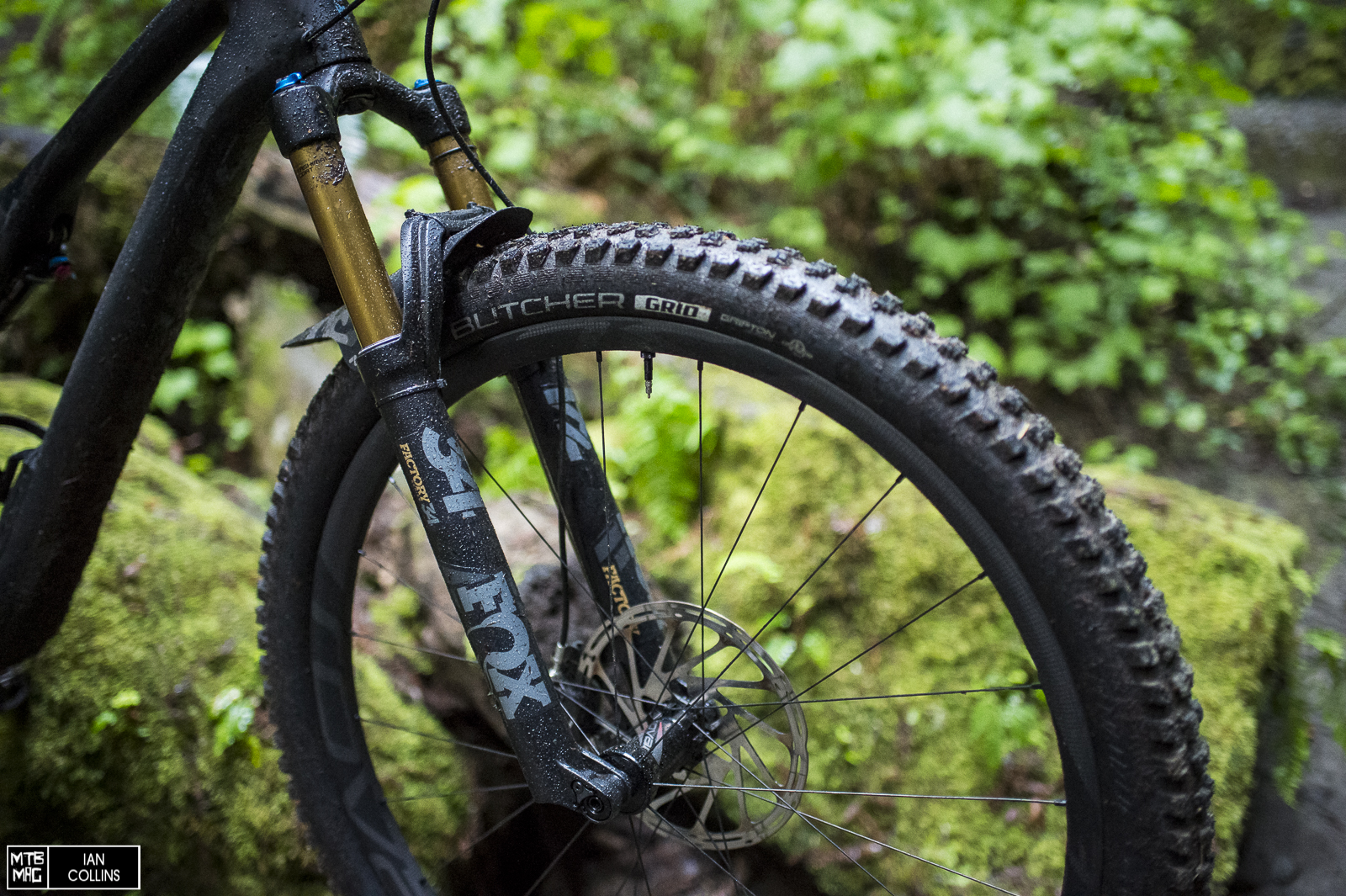
As mentioned prior, Specialized puts in the work to get their own specific tunes, even in the forks spec’d on their bikes. The 34 fork up front has Boost spacing and 130mm of travel in FOX’s mid-duty chassis. There are 3 compression settings: Open/Trail/Locked, and a low speed compression adjuster for the Open mode. As expected, the rebound is also externally adjustable. Out back the FOX Float DPS Factory also has a specific “Rx Trail Tune” with a high volume EVOL Air sleeve, and 3 position adjustment with 3 settings which affect compression in the Open mode. Its overall length and shock stroke length are 190mm and 42.5mm respectively. *Compared to our relatively lighter duty Stumpjumper ST, on a standard Stumpy S-Works, a beefier FOX 36 and and DPX2 with a reservoir are stock bits.

In execution, the chip is really more of a cam, but it’s simple, effective and doesn’t necessitate a proprietary shock or shock parts. It just takes two 5mm allen keys and a couple of minutes to swap between settings with a rather brilliant two piece bushing. Although I rode the bike in “Low” the whole time, the option to run the bike in a steeper/higher, more conservative setting provides the Stumpjumper ST with a more broad appeal beyond the “aggressive trail” category.

On the left are a couple of small, but nifty updates. Up top, looking closely, you can see the chainguide’s been opened up to expose the chain. With the updated version, this can be done without tools, by hand. Down low, it’s hard to see, but a new rubber fitting between the seat tube and chainstay yoke serves as a pass through for the internal cable routing. On the right, we’re illustrating tire clearance, which goes up to 29 X 2.6″. Our 2.6″ Butchers measured at exactly 2.4″, but either way, there is a load of clearance.
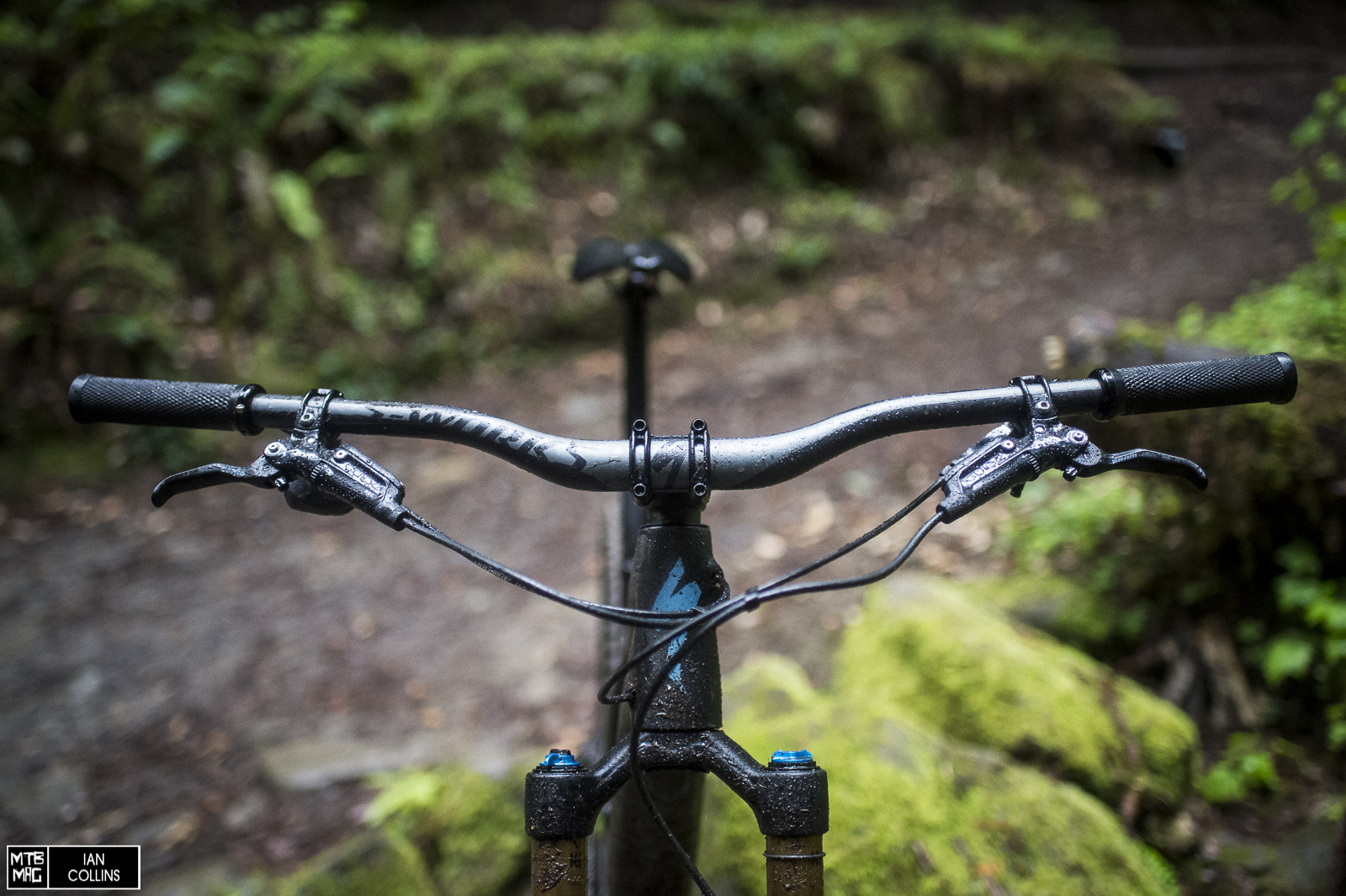
SRAM guide RSC brakes manage the speed nicely. I’ve had a great deal of bikes fitted with these brakes and never had an issue. Although it’s a shorter travel bike, Specialized spec’d the Stumpy ST with a 200mm front / 180mm rear rotor combination. They could have gone 180mm / 160mm to get the weight down and save costs, but for a big wheeled bike aimed at aggressive riding, I feel that they made the right move and commend that decision. The handlebar says 780mm in the specs, but arrived at 790mm, which I think is perfect. There are guide marks to cut them down, should you choose. The Syntace stem is 50mm length, which is the benchmark length for a fast handling front end. The only thing that I swapped on this bike was the grips, and it’s not that the stock grips are bad – it’s just that I’m fussy.

Roval Traverse Fattie SL wheels are the best carbon fiber wheels that I’ve tried to date. I tested them (amongst many other carbon fiber wheelsets) and rate their trail feel as “just right”…They take the edge off, but aren’t too stiff. Their freakishly light weight (1570g.) makes them a treat when trying to get up to speed and sprinting out of turns. The hookless 30mm inner diameter rim width provides a perfect footprint for medium to wide-ish tires, aiding in traction and preventing the tire from rolling in turns under heavy load. A 54 tooth DT-Swiss star ratchet system has a super fast engagement and is ready for tool free rebuilds. My bike arrived with 29″ X 2.6″ Butchers as opposed to the stock bike which has a 29″ X 2.3″ Butcher front, Purgatory rear combination. As mentioned prior, they measured in at 2.4” actual width.
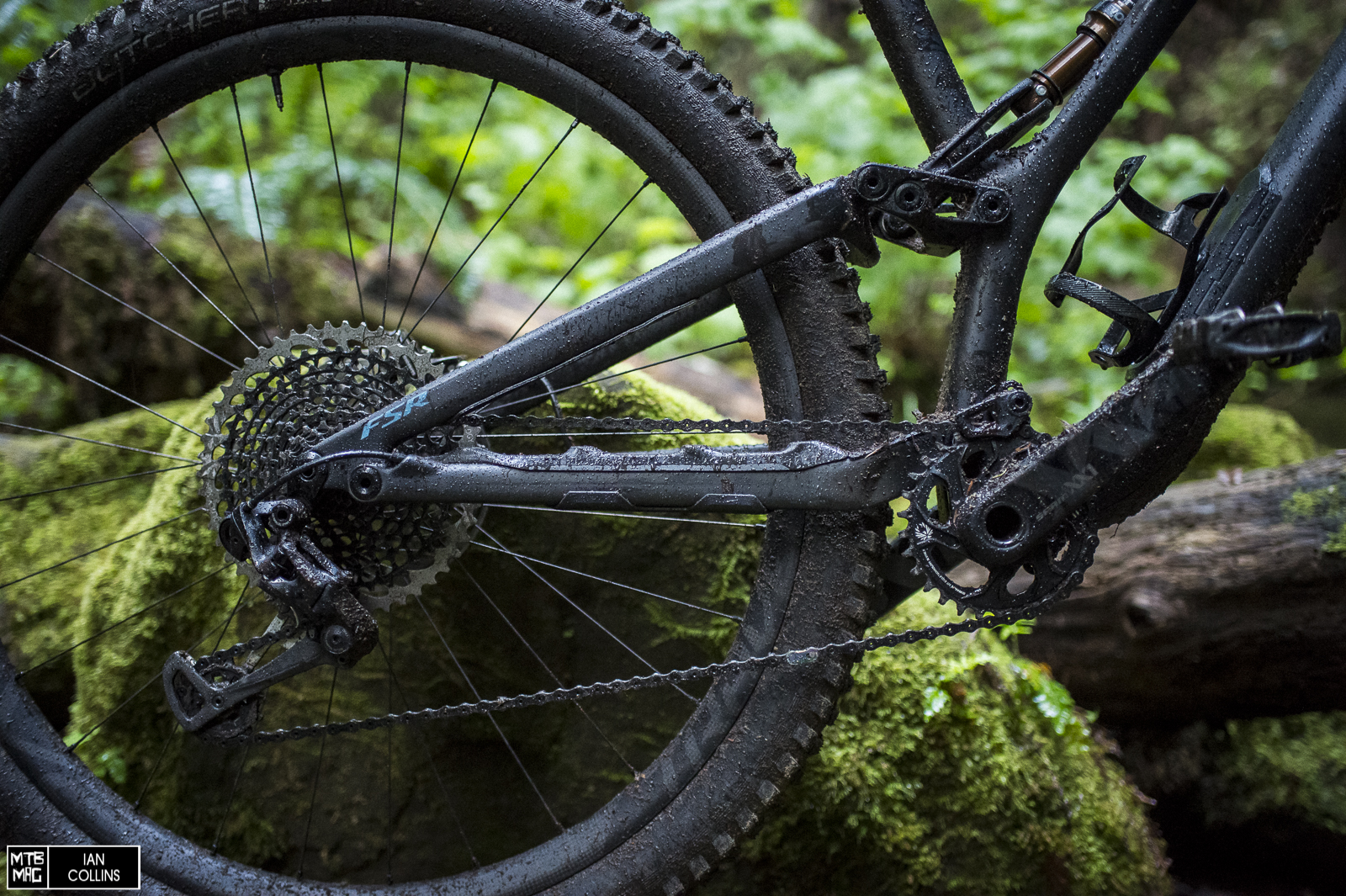
As the flagship bike, Specialized have unsurprisingly chosen Eagle XX1 for the drivetrain. I love that they spec’d shorter 170mm cranks – they pair well with the low BB and prevent pedal strikes when you’re getting rowdy. They chose a 30T front chainring to pair to the 12-speed, 10-50T rear cassette. Stronger riders may opt for a 32T, but I can’t criticize the choice of a 30T. Looking closely, you’ll notice an interesting shape on the top part of the chainstay protection. Four raised sections break up the chain slap better than one flat surface. Subtle, but key innovations like this are the type of thing that keeps people stoked on Specialized…
On the trail
At 6 feet tall on the nose, the size Large fit me perfectly. This came as a relief because the last model of Stumpjumper left me hanging between size Large and XL, which had me a bit hot and bothered as I should be a size Large, precisely. Anyhow, out of the gate I did precisely ZERO fussing with setup (aside from the aforementioned grip swap). The bar height and width was just right and I wasn’t itching for a shorter or longer stem. I set my sag to my go to of around 22% front and 30% rear and headed out. I’ve got to say, it was almost eerie that I didn’t need to do more to the bike to get comfortable.

Most good rides start out with a climb and ours were no exception. Interestingly enough, one of the first things that I noticed was the Phenom saddle, and for good reason. It was really, really comfortable on long rides. Somehow, the shape and contour just worked for me. As a long limbed rider, I was very happy aboard a 160mm dropper post. In terms of positioning, the Stumpy ST provided me with perfect weight distribution, thanks in part to its steep 75.1º effective seat tube angle, which let me get my weight up toward the front of the bike more easily. Kinematically speaking, this bike was pretty neutral under climbing, but it didn’t blow me away. I often used the trail mode for techy climbs and always opted for full lock out on fire roads. As far as overall efficiency, I know the wheels are light and sprightly, but this bike wasn’t quite bare bones stock as it had meatier 2.6″ tires. With mid-weight “Grid” casings, there is a bit of added rolling weight, but this model is aimed at “aggressive trail” and puncture resistance is key. With that in mind, surely the stock 2.3″ Butcher/Purgatory combination on a stock S-Works ST would roll a touch faster than my setup did.
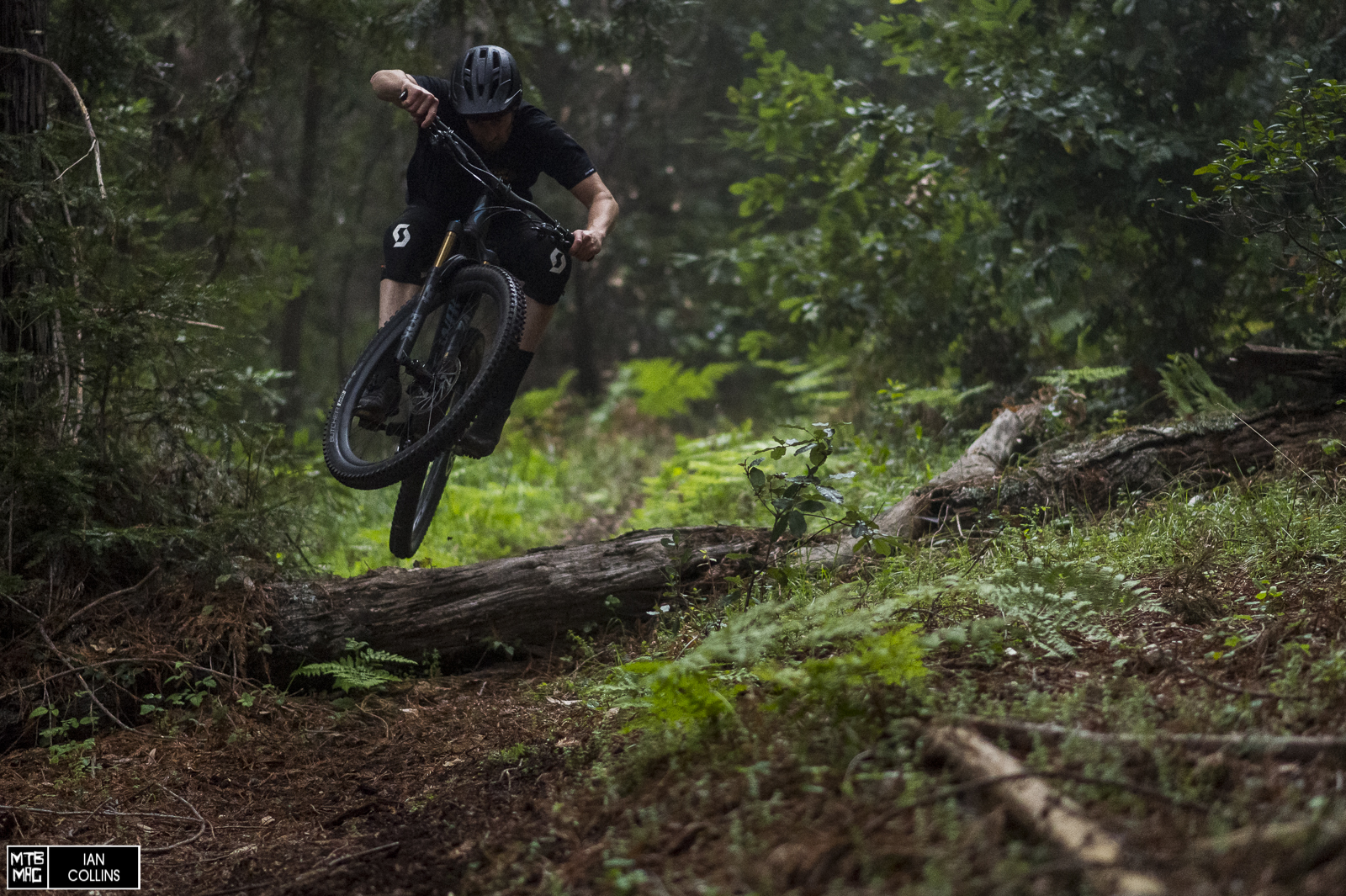
Once I got into singletrack that oscillated between being punchy and flowy, the Stumpjumper ST truly came alive. It’s easily the most precise bike that I’ve ever ridden, and what’s most impressive is that its accuracy shines at all speeds. Often bikes with conservative geometry excel at low speed, but get nervous at high speed while aggressive bikes are great at speed, but floppy and slow in tight turns. That was not the case, and this is one extremely well balanced machine. The well proven XX1 Eagle drivetrain was flawless as were the Guide RSC brakes with 200mm/180mm rotors providing more than enough stopping power. The FOX 34 provided just enough stiffness and had loads of adjustability. I did have a few bottom outs, but I suspect that in stock form it only has one volume reducer in its air spring. I’ll likely add another to increase bottoming resistance in the future. As far as parts go, this is an expensive, flagship bike so it’s no surprise that everything checks out flawlessly – suspension, drivetrain, brakes, dropper, cockpit, wheels and beyond were all excellent.

With the Stumpjumper ST feeling so nimble and lively on mid-grade terrain, I was apprehensive and falsely assumed that it might not handle the steeps quite so well. I was completely proven wrong. After a short period of getting acquainted on slightly tamer trails, I decided to take it on a trail that I typically only ride on bigger bikes. It drops 1,100 feet in .9 miles, so you can assume two things: It’s very steep and it’s very fast. One thing that surprised me immediately is that this bike actually drifted like a champ, something I wasn’t expecting. It manhandled long, drawn out loamy, duffy turns in controlled slides with surgical precision. It was never twitchy and it was extremely comfortable in the air.

Something that I’ve been critical of Specialized with in the past is that their bikes typically have high leverage ratios. This has improved a bit with the new line of Stumpjumpers and I could feel it on the trail. This bike was a bit more willing to soak up consecutive, mid sized hits without getting as rattled. In my opinion this could be because the shock is less overwhelmed. Speaking of rattle, this was one of, if not, the quietest bikes that I’ve ridden. It’s likely the sum of the parts and not just one attribute, but I do think the oddly shaped chainstay protector does deserve credit. Additionally, a new, sleeved system for cables and hoses makes for an easy setup and reduces noise even further. A 27 ounce bottle fit with room to spare, but if you were to swap to a shock with a reservoir, you’d be relegated to a bit less volume. As we’ve noted before, the SWAT downtube storage is absolutely brilliant and in many cases negates the need for wearing a hydration pack. Version 2.0 sees 20% more volume and a nicely cleaned up door. The additional room comes from a much larger downtube, which I suspect must also be responsible for some stiffness gains and thus, the dramatically improved handling.
Overall
Regarding value, at $9,500 this bike is clearly super expensive and it has a flawless spec designed for the 1%. It’s on you – the consumer to interpret what I’ve said about the bike’s innate handling attributes and decide if there is a model here that makes sense for your budget. We’re hoping to test an entry level Alloy Stumpjumper EVO on the opposite end of the spectrum in the near future in order to provide a better scope of the whole line. A quick look at the Stumpy page reveals that the Stumpjumper Expert has an excellent spec at a much more reasonable $5,500.
With all of that in mind, the takeaway point is that I’ve never ridden a bike that has struck such a fine balance and excelled so well at such a broad range of riding. It’s minor limitation would be its short travel. If you mainly ride mega chundery terrain, you may want to opt for the standard Stumpy or the EVO as things will get a bit rough on the ST, but don’t take that the wrong way – this bike will keep cool even when you bite off way more than you can chew. An interesting caveat with the new line is that users have some mobility with setup. Outside of the high/low adjustment, you can swap your shock, yoke and an air spring in your fork and go to the longer travel option. Conversely, if you bought a standard Stumpy and wanted to switch to the ST version, you can also do that, should you choose. All in all, the new Stumpjumper lineup covers the broad spectrum of the “trail” category very thoroughly. I’m really excited to spend more time on this bike. I’ll be dabbling with varying travel lengths and tire combos and reporting back over the coming months.
www.specialized.com/
**This article has been updated for clarity and accuracy.**
The post [First Ride] Specialized S-Works Stumpjumper 29 ST appeared first on MTB-MAG.COM.
